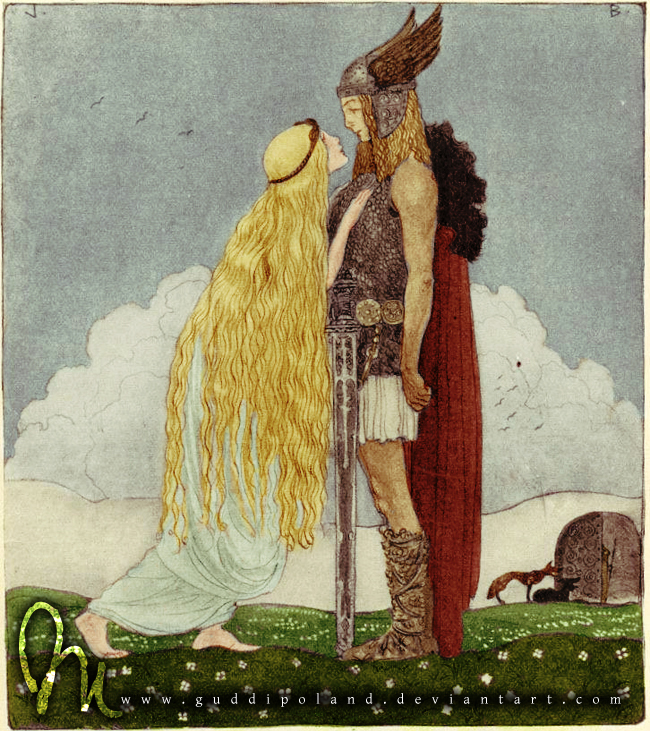|
There is much more to the unity of
Svipdagsmál than the poems simply telling a single story. Their
unity grows out of a poetic vision which organizes verbal and
narrative details into complex and interwoven patterns.
The most important such pattern is the pattern of nines. On the
narrative level this expresses itself in Gróa's nine charms, in
Svipdagr's eighteen questions, in Fjölsviðr's eighteen answers.
Thus these patterns of nines account for forty five of the sixty
seven stanzas — almost exactly two thirds — of the two poems.
Both poems balance themselves about these central patterns of
nines. Each poem has a brief introduction — five verses in
Gróugaldur, six in Fjölsvinnsmál — leading into a pattern of
nine. Gróugaldur ends with two stanzas of benediction after
Gróa completes her nine charms; Fjölsvinnsmál ends with eight
verses which unite Menglöð and Svipdagr after the completion of
the thirty-six stanza question sequence.
These patterns of nines create the major framework of the poems:
within that framework the poet's verbal craft creates further
linkages. The nine maidens of Menglöð (Fjölsvinnsmál 38), the
nine locks which guard Lævateinn (Fjölsvinnsmál. 26), and
(probably, see Commentary) the nine builders of Menglöð's palace
(Fjölsvinnsmál. 34) mirror the larger patterns. Each stanza
within the patterns of nines is linked to the others within the
same pattern by formulaic repetition (Þann gel eg þér... ; Segðu
mér það, Fjölsviður) and by verbal echo: the insistent optatives
of Gróa's charms (haldi, gangi, snúisk), or Fjölsviðr's mocking
repetition of Svipdagr's words (e.g. Fjölsvinnsmál. 7-8).
Outside these patterns of nines the narrative is interwoven by
verbal and thematic echo. As noted above (pp. 383): Svipdagr's
quest is framed by the references to destiny before he leaves
(Gróugaldur 4, 7) and at his moment of triumph (Fjölsvinnsmál
47); references to munir (Gróugaldur 4, 15, Fjölsvinnsmál 50)
and gaman (Fjölsvinnsmál. 5, 43, 50) interlace the narrative as
Svipdagr proceeds from fear to hope and final joy.
Most revealing is the poet's use of mögr. In the first verses of
Gróugaldur, Svipdagr describes himself to Gróa as her mögr 'son'
(1, 5). In the last verses of Fjölsvinnsmál, Menglöð describes
Svipdagr as her mögr, her "young man; lover" (45, 49). The shift
between the senses of mögr, from "son" to "young man", maps
precisely the change in Svipdagr over the two poems: he has
grown from his mother's son to Menglöð's lover.2
Here, the ending of Fjölsvinnsmál links to the beginning of
Gróugaldur: the son whose mother helps him in Gróugaldur becomes
the young man whose bride receives him at the end of
Fjölsvinnsmál.
"In my end is my beginning": Svipdagmál
begins with a son's anguished plea to his mother and ends with
his bride's assertion of their eternal bliss. Affirmations of
feminine power open and close the poems; powerful women — the
kristin dauð kona, Menglöð's maidens — promise threat or
succour. The poems' virtues are those of peace: healing, pacific
conquest of danger, triumph by nonviolent means and finally
loving marriage. The beauty of Svipdagmál 's integration on
every level — verbal, thematic, structural —is itself an
instance of the peaceful virtues the poems celebrate.
2
For the likely parallel with Sigurðr in the unusual use of mögr
'young man', and other parallels with the Sigurðr cycle, see p.
312.
|
